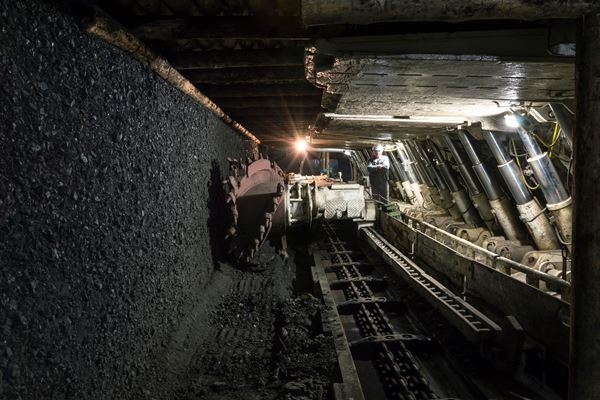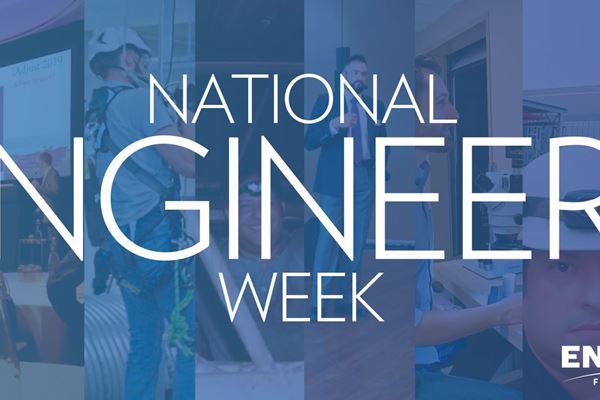Elevator & Escalator Maintenance: Prevent Damage & Downtime

Escalators are complex machines with numerous components that must work in harmony. The main structural frame, or truss, supports the step chain, which is driven by a motor. The handrail drive system, controller, and various safety devices ensure smooth and safe operation. Regular maintenance of these components, including the step rollers, skirt brushes, and comb plates, is necessary to prevent malfunctions and ensure user safety. Building managers must be aware of the potential hazards and maintenance requirements associated with escalators to keep them in optimal working condition.
Introduction to Elevator and Escalator Systems
Elevators and escalators are essential for efficient vertical (and sometimes horizontal) transportation in modern buildings. Effective management and maintenance of these systems are critical, especially given their susceptibility to damage from weather events.
- Hydraulic elevators, typically found in low to mid-rise buildings, use a piston and pressurized hydraulic fluid, making them reliable but vulnerable to flooding.
- Traction elevators, common in taller structures, rely on steel ropes and counterweights driven by motorized sheaves, which are prone to damage from water exposure, power surges and weather-related electrical issues.
- Machine room-less elevators, which house controls within the hoist way, save space but complicate inspections.
- Escalators, found in all types of buildings and like elevators, are susceptible to water exposure and power surges.
This article explores the types of elevators and escalators, their vulnerabilities, and the importance of regular maintenance and risk management to ensure their safe and efficient operation.
Types and Maintenance of Escalators and Elevators
Escalators, though simpler than elevators, come in various types with distinct components and vulnerabilities.
Straight escalators, commonly seen in airports, move linearly and are often installed in parallel configurations.
In shopping malls, parallel escalators operate side by side, with one moving up and the other down. High-traffic areas utilize multiple parallel escalators, while spiral or curved escalators, although less common, provide unique design solutions.
Specific needs and environments are addressed by inclined escalators, heavy-duty outdoor escalators, and wheelchair-accessible escalators.
Elevator and Escalator Machine Rooms and Hoist Ways
Both elevators and escalators rely on the machine room or equipment space, which houses critical elements like the motor controller, hydraulic pump unit, or traction drive system. Reliable operation depends on proper ventilation, climate control, and clear access; disruptions can lead to significant issues.
The hoistway, or elevator shaft, extends from the top to the bottom of the building and contains guide rails, landing entrances, and other essential elements. Vulnerable to water, air, and debris infiltration, the hoistway can suffer from rust, shorted sensors, and debris buildup. Inspecting the hoist way for damage is crucial, as issues here can affect the elevator system's overall functionality.
Elevator Cab and Car Operating Panel (COP) Risks
The elevator car, or cab, is the most visible part of the system where passengers ride. Damages such as damp carpeting, musty smells, or staining are often first noticed. The car operating panel (COP), which contains buttons and controls, is susceptible to surge-related damages and water exposure, impacting movement and emergency operations.
Despite being mounted inside the cab, the COP can malfunction due to water cascading down the elevator shaft, leading to unresponsive buttons, false floor calls, or unintended elevator movement. High humidity and condensation from HVAC systems can also cause issues, making it essential to monitor and address elevated moisture levels within the cab. Regular inspections help identify and mitigate these risks, ensuring the COP remains functional and reliable.
Elevator Car Top Vulnerabilities
The car top is another critical area prone to water damage. Components such as the door operator motor, limit switches, inspection station, and traveling cables are located on top of the elevator car and can be adversely affected by water exposure.
Inspecting the car top requires taking the elevator out of service, which can disrupt operations in high-traffic buildings. Identifying signs of water entry, such as rust patterns, mineral stains, or damaged wiring, is essential to prevent long-term damage and ensure safe elevator operation.
Effective Maintenance Strategies for Elevator Components
Mechanical components such as roller guides and guide rails are susceptible to water exposure, which can cause rust and pitting over time. This deterioration leads to vibration, noise, and operational issues. Regular cleaning and maintenance can mitigate minor damage, but ongoing monitoring for signs of wear is crucial. Newer elevators may employ slide guides instead of roller guides, requiring different maintenance techniques.
Passenger Interface Components and Electrical Damage
Passenger interface components, including the position indicator and hall call station, are vital for user interaction with the elevator. These electrical parts can suffer damage from power surges or water infiltration due to leaky walls, windows, or facade cracks. Power surges typically result in immediate failure, whereas water damage may only become apparent when a malfunction occurs. Routine inspections and timely repairs are essential to maintain functionality and ensure a seamless user experience.
Elevator Pit and Water Intrusion Hazards
The elevator pit is particularly vulnerable to water intrusion, especially during heavy rain or power outages. Key components located in the pit, such as buffers, limit switches, hydraulics, and sump pumps, can be compromised by flooding.
Water exposure can lead to corrosion, electrical failures, and impact the hydraulic cylinder, which relies on a seal to function correctly. Regular inspections and maintenance of the elevator pit are critical to prevent water damage and ensure safe operation.
Traction Elevator Mechanics and Safety Features
Traction elevators utilize a counterweight system to balance the elevator car, reducing the force required by the motor and enhancing efficiency for taller buildings. Key components of traction elevators include the sheave, hoist ropes, counterweight, and governor.
The governor is integral to safety, preventing the elevator from exceeding its maximum speed by engaging a clamping mechanism when necessary. A thorough understanding of the mechanics and safety features of traction elevators is essential for accident prevention and smooth operation.
Building Systems Impact on Vertical Transportation
Building systems such as electrical supply, fire alarm systems, and HVAC significantly impact the operation of elevators and escalators. Power outages, lightning strikes, and water exposure can adversely affect these systems, leading to potential failures in vertical transportation.
For instance, a power outage can render elevators and escalators inoperable, while a lightning strike can damage fire alarm systems and other electrical components. Ensuring that building systems are well-maintained and protected from environmental hazards is crucial for reliable operation.
Weather-Related Perils and Their Effects
Weather-related perils, such as flooding, power surges, and extreme temperatures, can also impact the functionality of elevators and escalators. Flooding can lead to water intrusion in elevator pits, causing damage to hydraulic systems and other components.
Power surges from lightning strikes can damage electronic controls, while extreme temperatures can affect HVAC systems' performance, leading to overheating of elevator machinery. Building managers must proactively address these potential hazards by implementing preventive measures and conducting regular inspections to mitigate weather-related damage risks.
Corrosion and Water Damage in Elevator Components
Water exposure can lead to severe corrosion in elevator components, such as hydraulic cylinders and steel ropes.
For instance, hydraulic cylinders submerged in water during a storm can exhibit a defined line of corrosion, indicating the water level during the event. Similarly, steel ropes with sisal material inside can absorb water, expand, and then shrink as the water evaporates, compromising their integrity. Regular inspections and timely maintenance are crucial to identify and address these issues before they escalate.
Escalator Electronics and Flood Case Study
Escalators, often located in high-traffic areas, are also vulnerable to water damage. The control boxes and electronic components situated beneath the escalator thresholds are particularly susceptible.
During flash floods or heavy storms, water can inundate these areas, submerging the electrical controls and causing significant damage.
In one case study, an escalator system in a building lobby was flooded during a flash flood, leading to extensive damage to the electronic components. While the initial proposal was to modernize the entire system, a detailed inspection revealed that refurbishing the mechanical components and replacing only the damaged electrical items was a more cost-effective solution.
Elevator Control Room Contamination and Fire Damage
Elevator control rooms are another area where water exposure can lead to severe damage. Lightning strikes and subsequent fires can cause smoke and soot contamination, which can infiltrate control boxes and lead to overheating and malfunction. In one instance, a lightning strike caused a fire on the rooftop of a building, and the resulting smoke and soot were drawn into the elevator control box, causing additional problems.
Ensuring proper ventilation and implementing fire-resistant measures can mitigate such risks and protect the control systems from contamination.
Importance of On-Site Inspections
On-site inspections are vital for assessing the extent of damage and planning repairs. Engaging with elevator vendors and mechanics during inspections can provide valuable insights into the condition of the equipment and the necessary safety measures.
For example, during an inspection of a hydraulic elevator pit that was flooded, it was discovered that the reported damage was due to a hydraulic leak rather than water submersion.
Such findings can significantly alter the repair approach and cost estimates, highlighting the importance of thorough inspections and expert evaluations.
Best Practices for Vertical Transportation Risk Management
Effective management of elevators and escalators, particularly after weather events, requires a comprehensive understanding of their types, components, and vulnerabilities. Hydraulic, traction, and machine room-less elevators, each with distinct characteristics, along with varied escalator configurations, necessitate diligent inspection and maintenance. Critical elements such as the machine room, hoist way, elevator car, and car operating panel must be routinely checked to ensure reliable operation.
Identifying and addressing vulnerabilities, especially those related to water exposure, is vital for minimizing risks, preventing damage, and ensuring optimal performance.
Building managers, engineers, and maintenance personnel must adopt proactive maintenance strategies, including regular inspections and preventive measures, to enhance the safety, efficiency, and longevity of these vertical transportation systems.
Work with Envista Forensics to Mitigate Risk and Ensure System Reliability
Elevators and escalators are just one part of the larger network of systems that keep buildings functional, efficient, and safe. As this article illustrates, weather events, moisture intrusion, electrical surges, and system vulnerabilities can all contribute to complex failures that require expert evaluation and timely response.
Envista Forensics offers a comprehensive, multidisciplinary approach to identifying the root cause of system failures, evaluating damage, and supporting remediation efforts across commercial, residential, and industrial settings.
Whether you're responding to an incident or proactively assessing risk, our experts bring deep technical knowledge and field-tested experience in engineering, equipment evaluation, and forensic analysis.
From post-incident inspections to preventive strategies, we help property owners, insurers, facility managers, and legal professionals make informed decisions that reduce downtime, control costs, and protect assets.
Ready to protect your critical building systems from failure and environmental damage? Partner with Envista Forensics today.
Explore our services or contact our experts for a consultation.
Our experts are ready to help.




